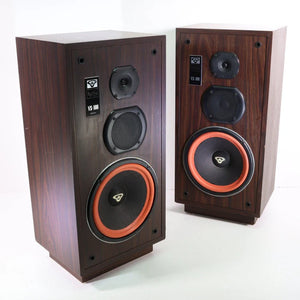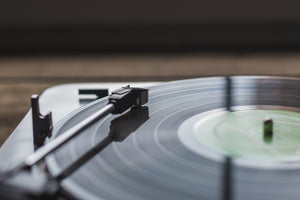We are unable to reply to comments, so please message us directly if you have a specific question regarding products, shipping costs, etc. Our office number is (480) 207-1511. Our email is hello@spencertified.com. You can also message us on Facebook. Commonly asked questions and answers can be found on our FAQs page here.

TONE IT DOWN: A GUIDE TO COMMON TONEARM SHAPES
THE DIFFERENT TURNTABLE TONEARM SHAPES AND THEIR IMPACT ON SOUND
They come in different shapes and sizes. They play an important role in the functioning of turntables. They can even impact sound quality. What are they? Turntable tonearms.
If you’re a newbie to the world of vinyl, you might’ve overlooked the tonearm - it’s obviously important, but the specific shape tends not to be on the forefront of a person’s mind when they go turntable shopping for the first time. But they do come in different shapes, and each one has a specific purpose behind their design. They each affect the audio quality and performance of the turntable in certain ways as well.
So let’s find out what exactly a tonearm’s purpose is and what different shapes you’re bound to run into!
WHAT IS A TONEARM?

A tonearm is the moving part of a turntable that holds the needle in place. It has a counterweight on one end and a headshell on the other. It's the tonearm that supports the cartridge as it moves towards the record’s center during playback.
They’re most often made from aluminum, which is both lightweight and strong, but they can also be made of materials such as carbon fiber and, more uniquely, wood.
WHY IS A TONEARM IMPORTANT?

There are many cooperating parts of a turntable - the plinth (the outer chassis or base), the platter (the rotating disc that the record sits upon), and the slip mat (the thin mat that rests atop the platter) to name a few. But the tonearm is just as important, if not more so, than these other components. Why?
Well, without it, the needle couldn’t read the grooves and the turntable couldn’t play the record at all. But a stable tonearm also reduces various audio distortion and trajectory errors, ensuring the best sound playback experience possible. And since the tonearm is responsible for holding the needle so it can follow the record’s grooves, it needs to be a combination of steady, flexible, and balanced. It has to be able to keep the needle centered while also trailing up and down over the record’s ridges. It also plays a significant role in reducing the wear of vinyl records.
Tonearms come in three main shapes: straight, J-shape, and S-shape.
STRAIGHT

A straight tonearm (sometimes referred to as I-type or I-shape) is as its name suggests: straight, with no bends or curves. They come in different sizes. Longer ones typically rely on anti-skate mechanisms to properly function. Shorter ones are more stable, so anti-skate is not needed for the tonearm to work correctly.
They both have pros and cons. Longer tonearms are heavier, making them more complex due to their need for the anti-skate function to counteract the inward friction of the record spiral. Shorter straight tonearms have less mass and are therefore more stable, meaning less of a chance of the arm vibrating during playback. However, they’re more likely to jump out of the groove since they’re lightweight. The "correct" mass really just depends on the tonearm and the cartridge.
J TYPE

A J type tonearm is very similar to a straight one but for the slight bend at the headshell, giving it a J-like shape. This type of tonearm has a bit more weight than a straight tonearm, which keeps the stylus in the grooves during playback, preventing your cartridge from skipping as well as reducing tracking errors.
The curve also allows this longer tonearm to fit into a smaller space, giving it the advantage of a shorter straight tonearm and the extra weight of a longer straight tonearm.
S TYPE

An S type tonearm is another curved tonearm. It eliminates vibrations from the plinth and the records, reducing tracking errors. This offers greater resistance against imperfections that are triggered by old or damaged records. It maintains horizontal balance, so the stylus remains as close to the center of the groove as possible, providing a smooth playback experience.
Like the J-shaped arm, this type was designed to fix the problems of overhang and stroke length. An S type is one of the more versatile tonearm shapes.
SUMMARY
There are a few different shapes of turntable arms out there, but these are the three most common. Each has their pros and cons. On one hand, straight tonearms track well and don't skip as often, but many record player owners testify that they wear out vinyl faster. On the other hand, curved is better for sound quality and offers greater resistance to the poor audio that can come from disc imperfections and worn records.
Of course, the shape of your tonearm depends on your turntable’s make and model, the cartridge you’re using, and any personal preference you may have. Different shapes can affect the type of sound you get from your vinyl collection, so if you can try different ones out before you buy, you’ll probably be that much happier in the end!
Thanks for reading! If you’re looking to get into the world of vinyl and want a nice vintage turntable to play it on, please consider checking out our collection of turntables and record players here.
Have a great day!



Leave a comment